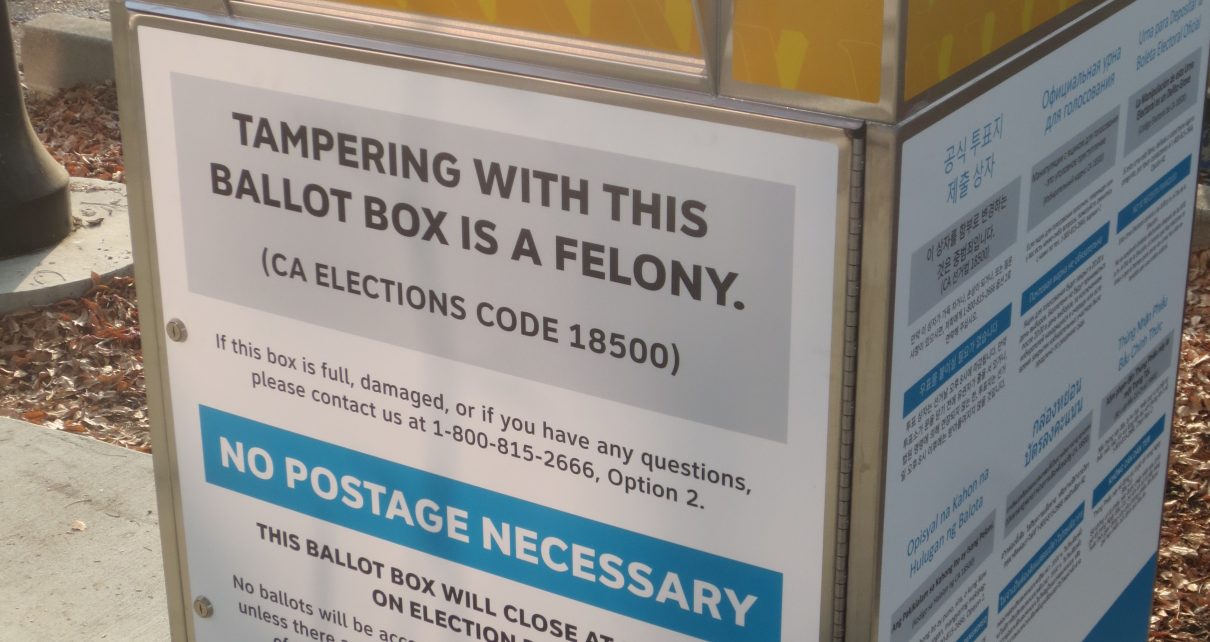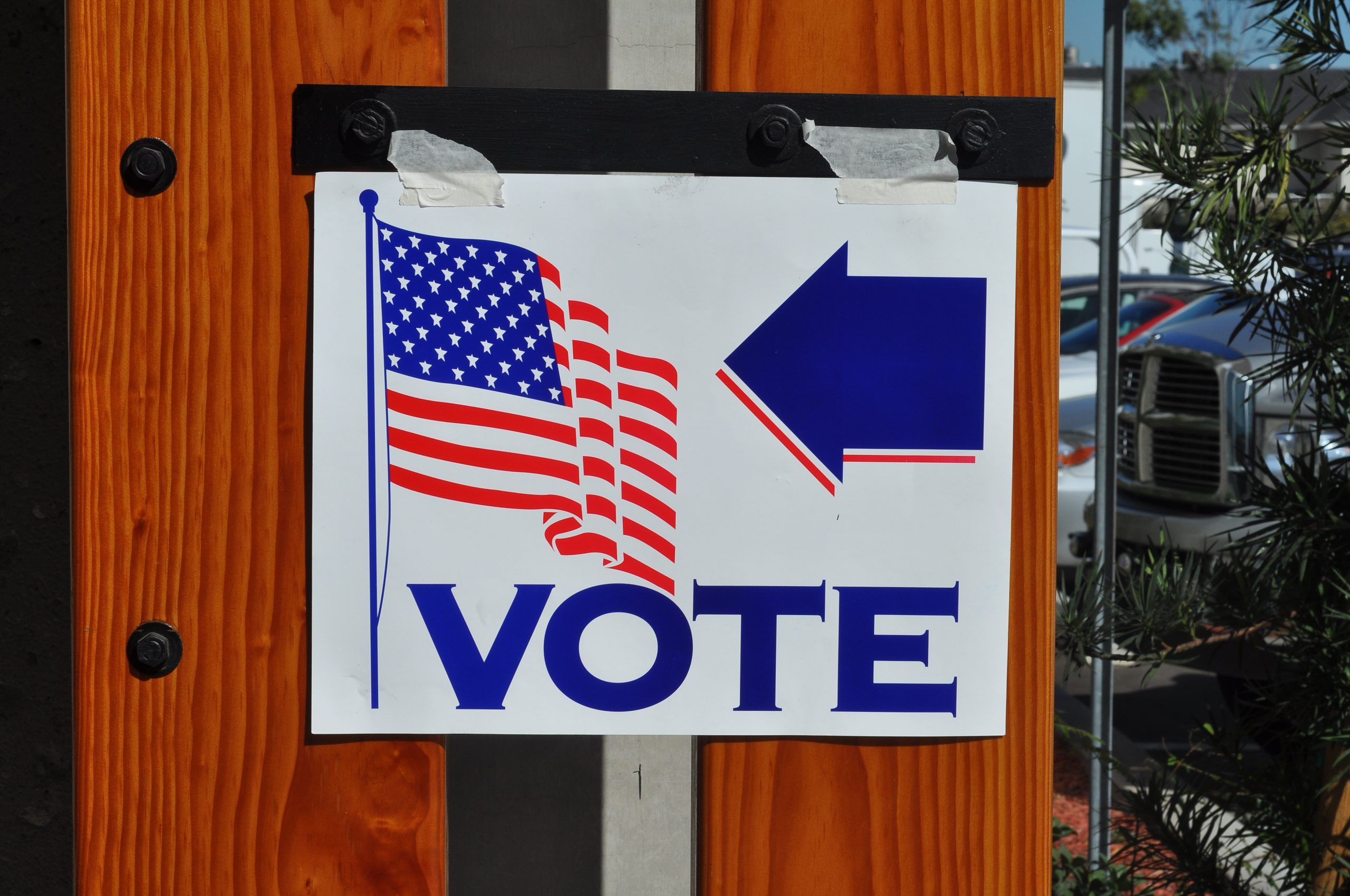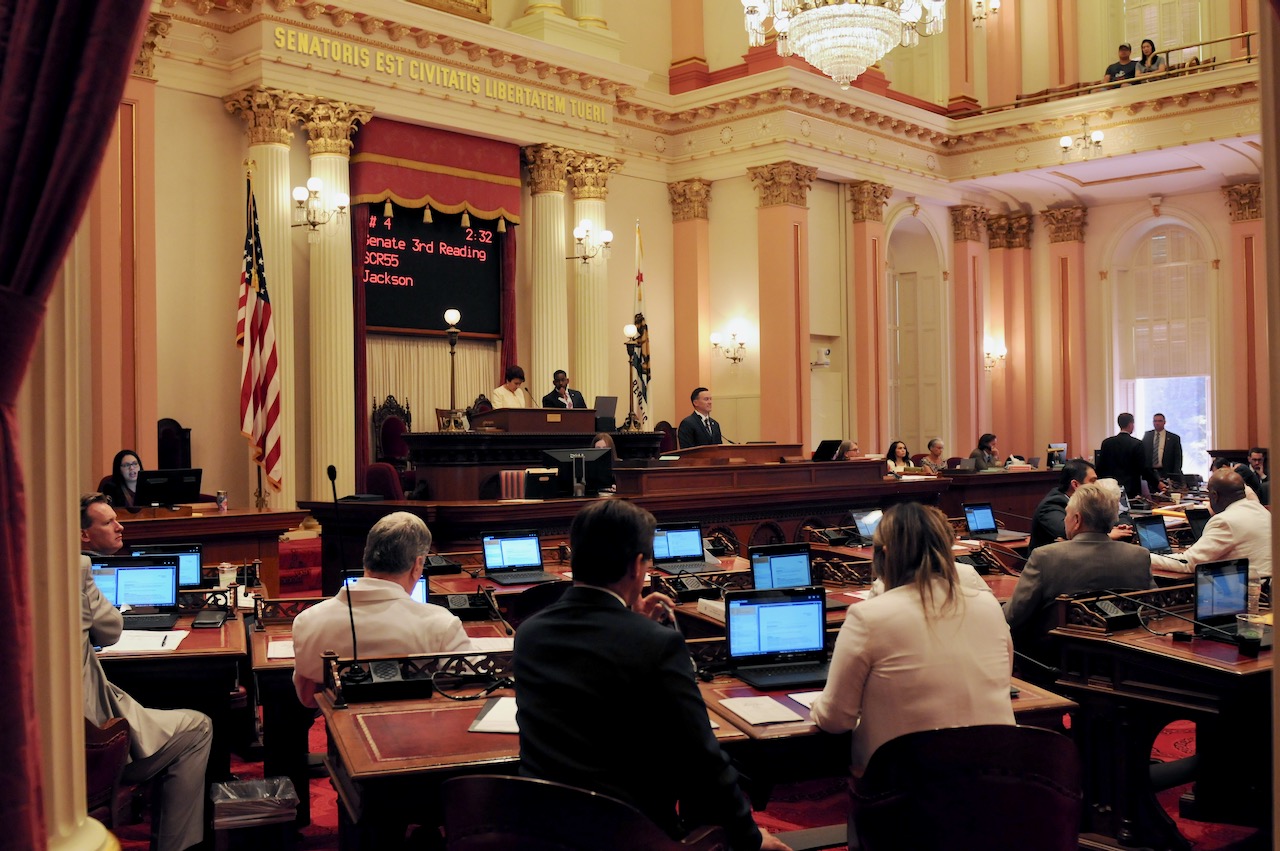
A ballot box in LA County (Photo: Evan Symon for California Globe)
Provisional Voting in California
Once voted, the voter’s ballot must be sealed in a provisional ballot envelope, and the ballot in its envelope is deposited in the ballot box
By Chris Micheli, January 27, 2022 6:44 am
Like in other states, California allows “provisional voting.” It is governed by the state’s Elections Code in Division 14, Chapter 3, Article 5, in Sections 14310 to 14314. Section 14310 provides that, at all elections, a voter claiming to be properly registered, but whose qualification or entitlement to vote cannot be immediately established upon examination of the roster for the precinct or upon examination of the records on file with the county elections official, must be entitled to vote a provisional ballot according to the following:
- An elections official must advise the voter of the voter’s right to cast a provisional ballot.
- The voter must be provided a provisional ballot, written instructions regarding the process and procedures for casting the ballot, and a written affirmation regarding the voter’s registration and eligibility to vote.
- The voter is required to execute, in the presence of an elections official, the written affirmation stating that the voter is eligible to vote and registered in the county where the voter desires to vote.
Once voted, the voter’s ballot must be sealed in a provisional ballot envelope, and the ballot in its envelope is deposited in the ballot box. All provisional ballots voted must remain sealed in their envelopes for return to the elections official in accordance with the elections official’s instructions. The provisional ballot envelopes must be of a color different than the color of, but printed substantially similar to, the envelopes used for vote by mail ballots, and must be completed in the same manner as vote by mail envelopes.
During the official canvass, the elections official is required to examine the records with respect to all provisional ballots cast. Using the procedures that apply to the comparison of signatures on vote by mail ballots, the elections official must compare the signature on each provisional ballot envelope with the signature on the voter’s affidavit of registration or other signature in the voter’s registration record. If the signatures do not compare or the provisional ballot envelope is not signed, the ballot must be rejected. A variation of the signature caused by the substitution of initials for the first or middle name, or both, does not invalidate the ballot.
In addition, provisional ballots are prohibited from being included in any semiofficial or official canvass, except under one of the following conditions:
- The elections official establishes prior to the completion of the official canvass, from the records in his or her office, the claimant’s right to vote.
- The provisional ballot has been cast and included in the canvass.
- Upon the order of a superior court in the county of the voter’s residence.
A voter may seek a court order regarding his or her own ballot at any time prior to completion of the official canvass. Any judicial action or appeal has priority over all other civil matters and a fee cannot be charged by the court. In addition, the Secretary of State is required to establish a free access system that any voter who casts a provisional ballot may access to discover whether the voter’s provisional ballot was counted and, if not, the reason why it was not counted.
Section 14311 specifies that a voter who has moved from one address to another within the same county and who has not reregistered to vote at that new address may, at his or her option, vote on the day of the election at the polling place at which he or she is entitled to vote based on his or her current residence address, or at the office of the county elections official or other central location designated by that elections official.
Section 14312 requires this article to be liberally construed in favor of the provisional voter. Section 14313 provides that, upon the declaration of a state of emergency by the Governor and the issuance of an executive order authorizing an emergency worker to cast a ballot outside of his or her home precinct, elections officials in the counties included in the executive order are required, upon demand, to issue to an emergency worker a provisional ballot that may be identical to the provisional ballot offered to other voters in the county, using a process to be determined by the elections official.
Section 14314 requires the Secretary of State to promulgate regulations establishing guidelines for county elections officials relating to the processing of provisional ballots.
- Frequently Asked Questions about State Agency Ethics Training - April 26, 2024
- Frequently Asked Questions about When Elected Officials Take Office - April 25, 2024
- Frequently Asked Questions About Ethics Training for Local Agencies - April 24, 2024




